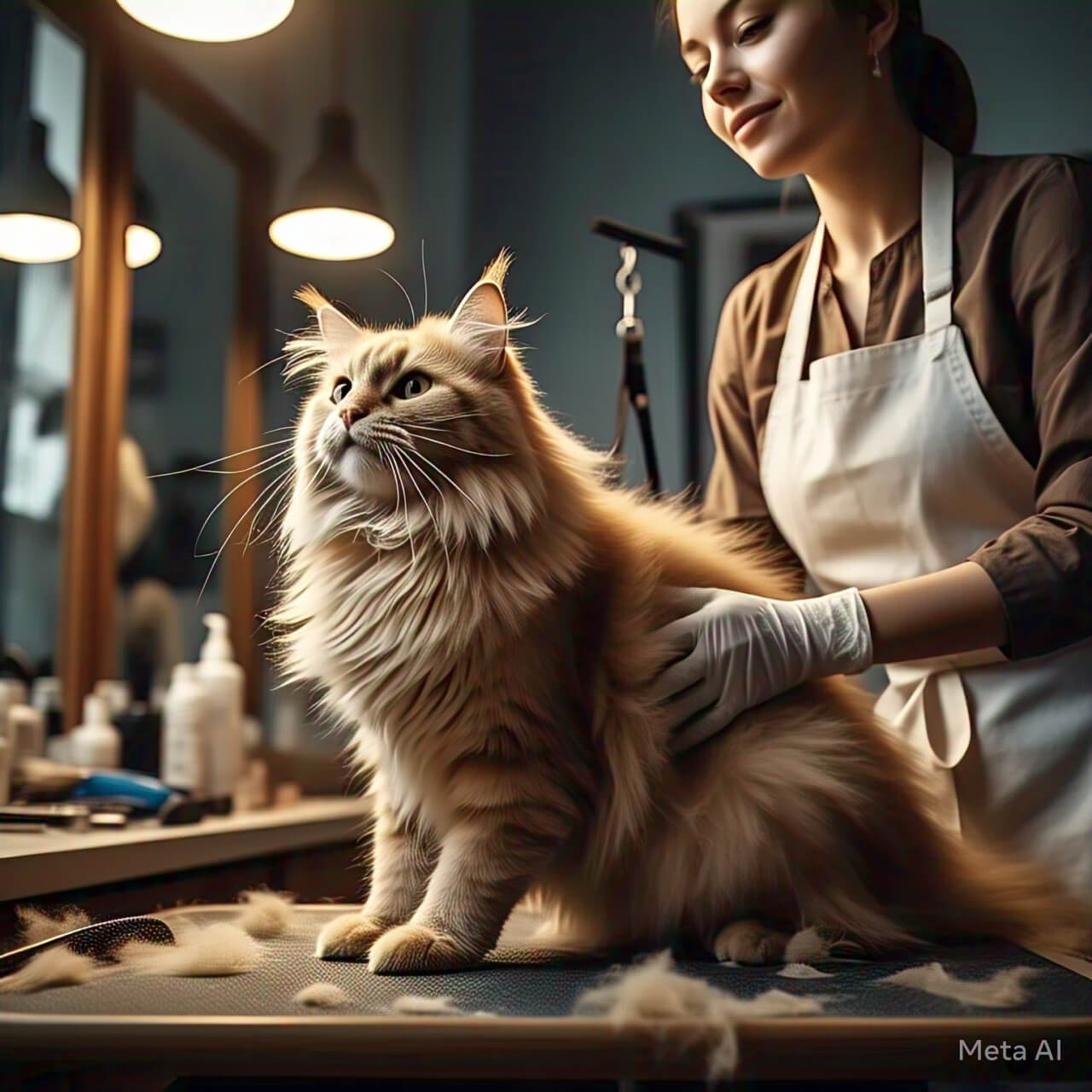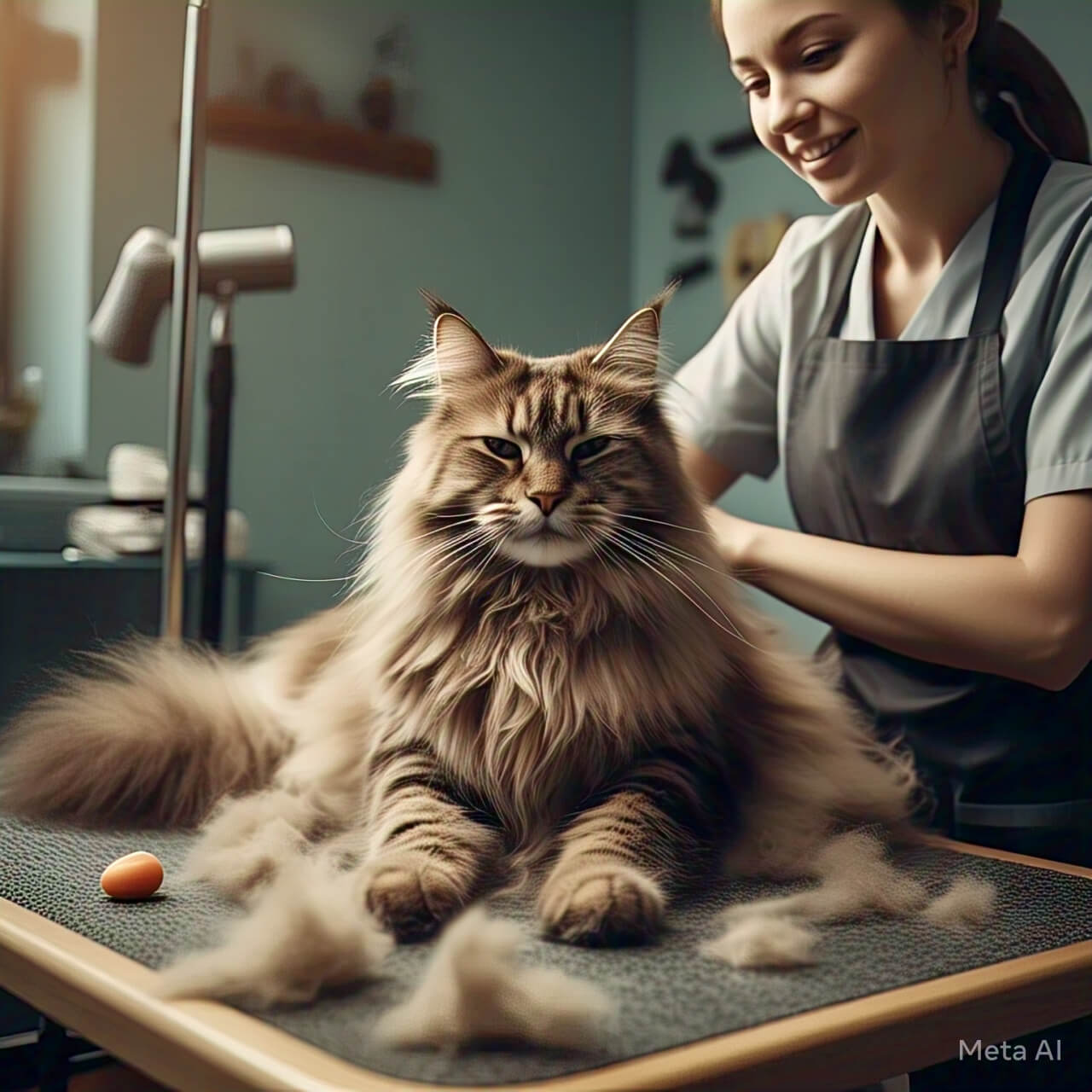How to Groom a Long-Haired Cat: Grooming a long-haired cat is important to keep its fur soft, tangle-free, and healthy. Without regular care, their fur can get matted, dirty, or even cause skin problems. Long-haired cats like Persians, Maine Coons, and Ragdolls need extra attention because their fur grows quickly and can easily become knotted. Brushing your cat often helps remove loose hair, prevents hairballs, and keeps their coat shiny. Bathing them once in a while can also help, but not all cats like water, so you must be gentle.
Trimming their fur, especially around the rear end, can prevent messes after using the litter box. Cleaning their ears, trimming their nails, and checking for fleas are also part of good grooming. Some cats may not enjoy grooming at first, but with patience and treats, they can learn to tolerate it. Always use the right tools, like a wide-tooth comb or a slicker brush, to avoid hurting their skin. If the fur is badly matted, you may need to visit a professional groomer. Regular grooming also helps you bond with your cat and keeps them happy and comfortable.

10 Easy Tips for Grooming a Long-Haired Cat
- Brush daily to prevent tangles.
- Use the right brush for long fur.
- Check for mats behind ears and legs.
- Trim fur carefully around the rear.
- Bathe occasionally with cat shampoo.
- Clean ears gently with a damp cloth.
- Clip nails every few weeks.
- Reward with treats for good behavior.
- Watch for fleas while brushing.
- Visit a groomer if mats are severe.
1. Why Grooming is Important for Long-Haired Cats
Long-haired cats have thick fur that can easily get tangled, dirty, or matted. Mats are clumps of fur that pull on the skin, causing pain and even infections. Regular grooming removes loose hair, reducing hairballs when cats lick themselves. It also spreads natural oils, keeping their coat shiny and healthy. Grooming helps you spot fleas, ticks, or skin problems early. A well-groomed cat is happier and more comfortable.
2. Best Brushes for Long-Haired Cats
Not all brushes work well for long fur. A wide-tooth comb helps detangle without pulling. A slicker brush removes loose hair and small mats. A de-shedding tool reduces extra fur during shedding season. Always brush gently, starting from the head and moving toward the tail. Avoid brushing too hard to prevent skin irritation.
3. How to Remove Mats Safely
Mats can hurt your cat if pulled too hard. Use a comb or mat splitter to gently loosen them. If the mat is too tight, trim it carefully with scissors (avoid cutting the skin). For severe mats, see a groomer. Never yank or cut large mats at home.
4. Bathing a Long-Haired Cat
Most cats dislike baths, but sometimes they need one. Use lukewarm water and cat-safe shampoo. Wet the fur slowly, avoiding the face. Lather gently and rinse well. Dry with a towel or low-heat blow dryer. Reward your cat with treats afterward.
5. Trimming Fur for Hygiene
Long fur near the rear can get dirty. Trim it carefully with rounded scissors. Also, trim armpit and belly fur if it gets tangled. Never shave your cat completely—their fur protects their skin.
6. Cleaning Ears and Eyes
Wipe ears with a damp cotton ball (no Q-tips). Check for dirt or bad smells, which may mean infection. Clean tear stains under the eyes with a soft cloth.
7. Nail Trimming Tips
Clip nails every 2-3 weeks. Use cat nail clippers and avoid the pink quick (it bleeds). If your cat resists, try trimming a few nails at a time.
8. Dealing with Shedding
Long-haired cats shed a lot. Brush daily during shedding season. A healthy diet reduces excessive shedding. Vacuum often to keep your home fur-free.
9. When to See a Professional Groomer
If your cat has severe mats, skin issues, or hates grooming, a professional can help. They have the right tools and experience to handle difficult cases.
10. Making Grooming a Positive Experience
Start grooming when your cat is young. Use treats and praise to make it fun. Keep sessions short and calm. Over time, your cat will get used to it.

FAQs About Grooming Long-Haired Cats
| Question | Answer |
|---|---|
| How often should I brush my long-haired cat? | Daily brushing is best to prevent mats. |
| Can I use human shampoo on my cat? | No, it can irritate their skin—use cat shampoo. |
| What if my cat hates being groomed? | Go slow, use treats, and keep sessions short. |
| Should I shave my long-haired cat in summer? | No, their fur regulates temperature—just trim if needed. |
| How do I stop hairballs? | Regular brushing reduces hair they swallow while licking. |
Grooming a long-haired cat takes time, but it keeps them healthy and happy. With patience and the right tools, you can make it a stress-free routine for both of you.









